
Volume XVIII, Issue XXIII: Evening at Raven's Roost.
The America I Love, A Photo Journey
Photos by Bob Kirchman
Tomb of the Unknown Soldier
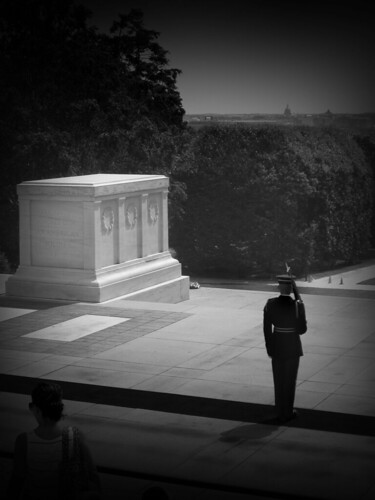
Tomb of the Unknown Soldier, Arlington, Virginia.
Wright Brothers Memorial

Wright Brothers Memorial, Kitty Hawk, North Carolina.
America the Beautiful
Words by Katharine Lee Bates, Melody by Samuel Ward
O beautiful for spacious skies,
For amber waves of grain,
For purple mountain majesties
Above the fruited plain!
America! America!
God shed his grace on thee
And crown thy good with brotherhood
From sea to shining sea!
O beautiful for pilgrim feet
Whose stern impassioned stress
A thoroughfare of freedom beat
Across the wilderness!
America! America!
God mend thine every flaw,
Confirm thy soul in self-control,
Thy liberty in law!
O beautiful for heroes proved
In liberating strife.
Who more than self their country loved
And mercy more than life!
America! America!
May God thy gold refine
Till all success be nobleness
And every gain divine!
O beautiful for patriot dream
That sees beyond the years
Thine alabaster cities gleam
Undimmed by human tears!
America! America!
God shed his grace on thee
And crown thy good with brotherhood
From sea to shining sea!
O beautiful for halcyon skies,
For amber waves of grain,
For purple mountain majesties
Above the enameled plain!
America! America!
God shed his grace on thee
Till souls wax fair as earth and air
And music-hearted sea!
O beautiful for pilgrims feet,
Whose stem impassioned stress
A thoroughfare for freedom beat
Across the wilderness!
America! America!
God shed his grace on thee
Till paths be wrought through
wilds of thought
By pilgrim foot and knee!
O beautiful for glory-tale
Of liberating strife
When once and twice,
for man's avail
Men lavished precious life!
America! America!
God shed his grace on thee
Till selfish gain no longer stain
The banner of the free!
O beautiful for patriot dream
That sees beyond the years
Thine alabaster cities gleam
Undimmed by human tears!
America! America!
God shed his grace on thee
Till nobler men keep once again
Thy whiter jubilee!
The Cherokee Nation

New Echota, in present day Georgia, was the capital of the Cherokee Nation.
Mohomony, The Natural Bridge of Virginia

The Monacan People knew Virginia's Natural Bridge as Mohomony, the Bridge of God.
Sherando Lake, Jefferson National Forest
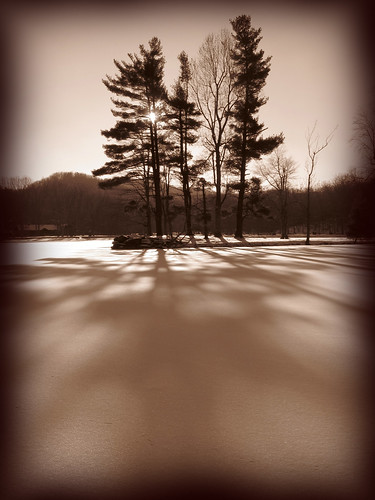
Ice covers Sherando Lake in Augusta County, Virginia.
America's Early Railroads

Baltimore and Ohio Railroad Bridge South of Staunton, Virginia.

Arches of the Baltimore and Ohio Railroad Bridge South of Staunton, Virginia.
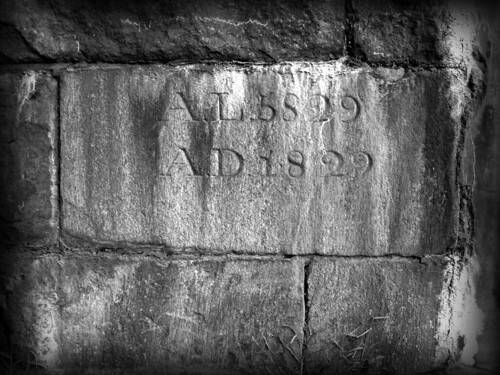
Cornerstone of Baltimore and Ohio Railroad Bridge, Ellicott City, Maryland.

Baltimore and Ohio Railroad Station, Ellicott City, Maryland. The station actually had an engine house behind the large door.
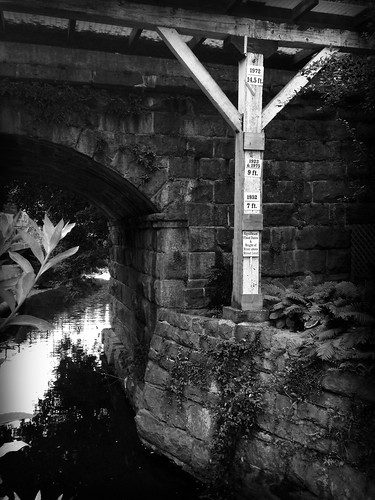
High Water Marks, Railroad Bridge in Ellicott City, Maryland.

The Patapsco Hotel, Ellicott City, Maryland. It is built of native granite.
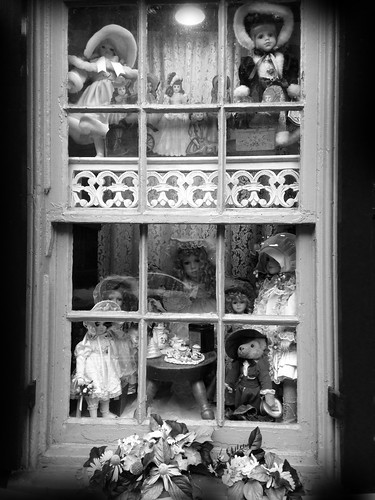
Dolls in a Shop Window, Ellicott City, Maryland.
McCormick's Mill

It was here that Cyrus McCormick invented the reaper and revolutionized world agriculture. Steele's Tavern, Virginia.
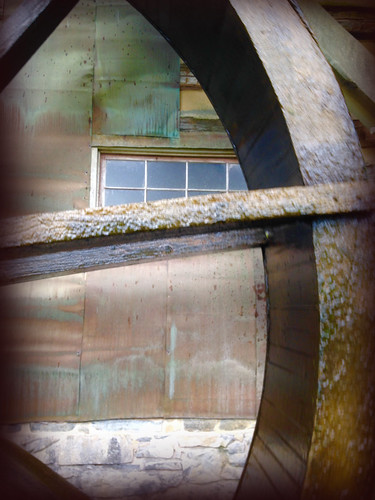
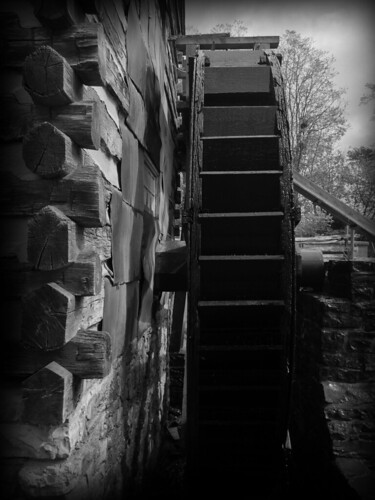

Mount Airy Farm


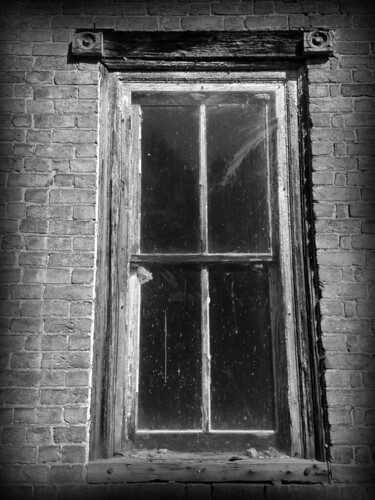
Before she became famous as a folk painter, Grandma Moses lived at Mount Airy in Augusta County just North of Staunton, Virginia.
Historical Mural, Crozet, Virginia
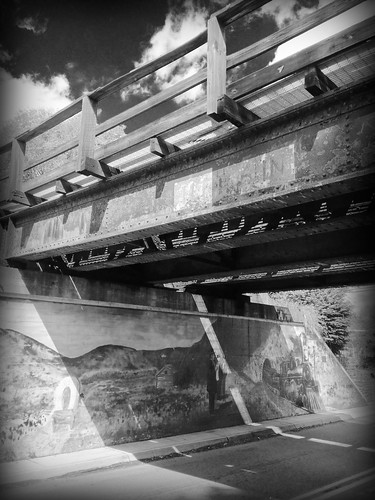

This mural celebrating the history of the Crozet area was painted by John Pembroke, Bob Kirchman and Western Albemarle High School Art Students. Restoration in 20112 was done by Kristina Elaine Greer, Meg West and Western Albemarle High School Art Students. The mural highlights the Monacan settlement here, the Big Survey settlement and the coming of the railroad built by Claudius Crozet, for whom the town is named.
Virginia State Capital Building
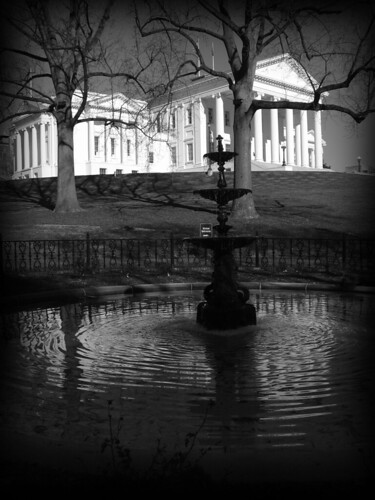

Thomas Jefferson designed the Virginia State Capital Building in Richmond, Virginia.
Poplar Forest

Thomas Jefferson's Octagonal House near Forest, Virginia.
University of Virginia

The Lawn, as designed by Thomas Jefferson, originally opened out to the rolling hills of Albemarle County, Virginia. In this reconstruction by Bob Kirchman it is seen open once again.
Sitka, Alaska
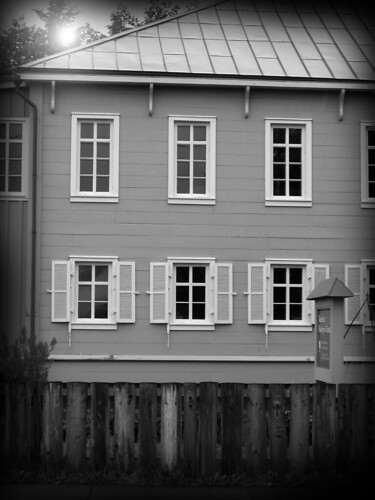
The Russian Bishop's House in Sitka, Alaska.
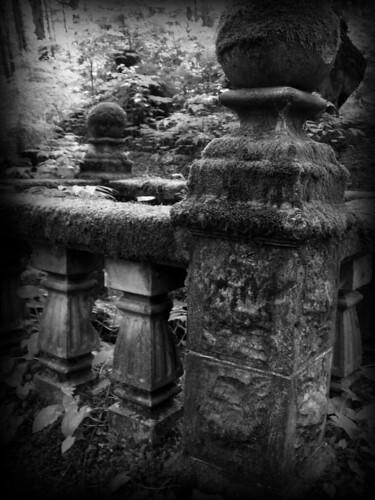
Abandoned Cemetery, Sitka, Alaska.
Shenandoah National Park, Virginia

Mary's Rock Tunnel on Skyline Drive, Shenandoah National Park, Virginia.
White Rock Falls, Virginia
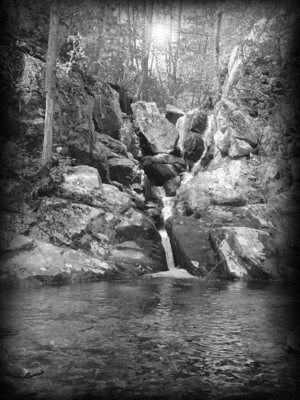
White Rock Falls is along the Blue Ridge Parkway in Virginia.
1776, Not 1619
[click to read]
America’s Founding was Not Defined by Slavery
For decades, much of academia, the liberal activist class, and the public school system have operated on the premise that America is fundamentally racist. The latest manifestation of this outlook is the 1619 Project, rolled out last month by the New York Times. Claiming that “anti-black racism runs in the very DNA of this country,” it “aims to reframe the country’s history” by making 1619—the year slavery was first introduced by the British to Virginia—the year of “our true founding.” This narrative is akin to the Jacobins’ alteration of the calendar to make their revolution the decisive turning point in human history. Just as they would save France from the monarchy, so, too, will the Times save America from white supremacy. The Times encourages public schools to adopt an accompanying curriculum that spreads the 1619 Project’s message to young Americans. Its goal is to brand our founding documents—the Declaration of Independence and the Constitution—as immoral and thus unworthy of our allegiance. To make America’s Founding contemptible, one must hide, ignore, and distort the Founders’ writings and thoughts. Irresponsibly omitted from this narrative is the fact that not a single major Founder endorsed slavery. On the contrary, the Founders unambiguously saw slavery as evil. George Washington said, “there is not a man living who wishes more sincerely than I do, to see a plan adopted for the abolition of it,” and Thomas Jefferson’s original draft of the Declaration of Independence calls the slave trade an “execrable commerce” and an affront “against human nature itself.” Gouverneur Morris called slavery a “nefarious institution” and “the curse of heaven,” and John Jay said, “It is much to be wished that slavery may be abolished. . . . To contend for our own liberty, and to deny that blessing to others, involves an inconsistency not to be excused.” (read more)
The Man Who Moved a Mountain
Bob Childress, The Pastor Who Tamed Buffalo Mountain
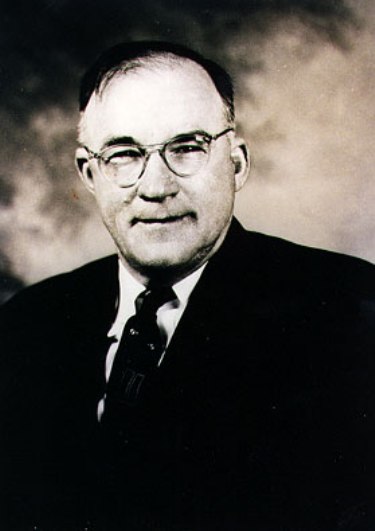
Pastor Bob Childress.
A Milestone Monday Feature
Today we think of gang violence downtown and forget that once there was gunfire in the small communities of Southwestern Virginia. Bob Childress was a hard-drinking, hard fighting resident of that region where the poverty of subsistence living was made more bearable, it was thought, by escaping to alcohol. Bob's parents drank heavily and fought constantly.
Following in his parent's footsteps, Childress missed a lot of school as a youth. One day he witnessed a massacre at the local courthouse and was moved to quit drinking and pursue a career in law enforcement. This was a noteworthy change in itself. Childress settled down, married and had four children; but G-d had plans for his life that would change the lives of people around him in a way he couldn't imagine.
Childress went to a revival meeting and found something more powerful than the spirits in a bottle. He found G-d and felt called to the ministry. At the age of thirty he returned to school, finishing high school in the same one-room schoolhouse attended by his six year old son.
He sought to bring the Spirit of the Lord to his hurting community. Though his education was pretty basic, he managed to go to Union Seminary in Richmond and struggled through. He became a much sought after speaker and was offered a very comfortable position with a large church... and he turned it down. Buffalo Mountain was his calling from G-d and he returned to his community and started a number of churches. His Sunday was a marathon as he made the journey to preach at each congregation.
Bob faced the daunting task of bringing the message of G-d's love to a community steeped in fatalistic despair. The churches he founded are testimony of what can be accomplished by a life lived for a greater purpose. Childress continued his ministry while caring for his daughter Hattie, who was severely disabled. When Bob's wife died, he took on such tasks as boiling the wash water for diapers. In the 1950's he was preaching in fourteen different churches every week. He died in 1956 at the age of 66.
Richard C. Davids tells his story in The Man Who Moved a Mountain [click to read], a stirring book. Lives like that of Bob Childress should challenge all of us. “Only eternity will tell the tremendous good accomplished in this unusual diocese.” -- The Synod of Virginia.
Remembering a Great Mentor
There was a Man who Convinced Me I Could Do This
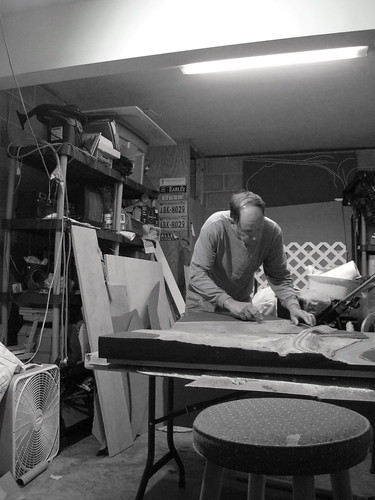
Reconstructing my model of Ellicot's Mills for the B and;O Railroad Museum.
A Milestone Monday Feature
In Chapter 14 of Chuck Balsamo's book Make Me a Legend Pastor Balsamo talks about the importance of finding a good mentor. He brought back some important memories as I recalled the influence of a man named Reggie. Reggie served in the Navy during World War II and achieved the rank of Aviation Machinist's Mate, Second Class. He was a first class mentor.
I met this amazing man because I went to school with his daughter. He was a Chevrolet mechanic and an avid outdoorsman. He introduced me to the wonders of Coastal New Jersey as I happily paddled for hours through marshes and creeks. At about 50 years old, Reggie became an instructor at the vocational technology school. There he discovered his true gifts and passions.
At an age where most men are thinking about taking it easy, Reggie enrolled in Rutgers University and pursued a degree in administration. Education and young people had become his true calling and he graduated from college the same time one of his daughters did.
Days at Reggies place where full ones. He lived in a little postwar bungalo and when his children and their assembled friends were descending on the place around ten in the evening, he'd put on a pot of coffee. It came as no surprise that Reggie enjoyed lively conversation and sometimes these talk sessions would end in the wee hours of the morning. Good coffee, however, always made up for sleep deprivation.
Reggie went on to become a high school principal, but I have to believe that the best classes he ever taught were at his own kitchen table. He noticed that I was a hands-on guy struggling with an academic world. He found information on architectural model making and shared it with me. "You'd be good at this, Bob." Years later I was literally living off of this compliment. My little studio built models for architects, including one famous one. I worked on several models for resort projects in Japan, though I'm not sure how a man who served in the Pacific Theater would feel about that.
No doubt, this man has influenced many young lives in a similar manor. I am priviledged to have known him.
Education's Misplaced Priorities
By Kasey Norton
From Walking Redeemed [click to read]
Is it possible we’re educating our children right OUT of salvation?
It’s a scary and extremely counter-cultural thought but I believe there’s something to it. And if there’s any chance that even a grain of truth lies within that question, it’s something we’d better look at long and hard.
Because society over the past 200 years has evolved where we now worship at the altar of education. We serve the gods that feed us with information, curriculum, diplomas and degrees.
Which, in turn, causes us to remain bowed down before gods that feed us money.
More money.
All the money.
We stress education so much that our children grow up thinking it’s the link to true success. And that, my friends, is a lie that may just hinge them to a life of ruin.
Because success is NOT any worldly attainment. A man in a big house with a fancy car is NOT more successful than a man in a small house with a clunker. Not if the man in the small house knows and serves Jesus while the man in the big house doesn’t.
Society lies. Our culture lies. The devil lies. And we, innocently or not, perpetuate those lies.
If we push our children to read by 3, and speak multiple languages, and write poetry as poetically as Longfellow, but they don’t have the love of God that seeps into their being and transforms them from the inside out, they literally have nothing. Our work is in vain.
If we train them, through hours of repetition, to calculate with the speed and efficiency of a computer, or to solve complicated problems using high order algebraic function, but they don’t know the love of God that saves them from themselves, they have nothing to share with others. Their lives will be lived in vain.
If we spend hours and weeks and years filling the minds of our children with historical facts, and geographical landmarks, and the periodic table of elements, they’ll be very smart in many ways. If we serve them up a side of church and religion and we talk occasionally of faith and prayer, they’ll even have a bit of head knowledge about God. But if we haven’t CONNECTED them to God and shown them His character and taught them of His sacrifice and pointed them to His victory on OUR behalf, we’ve given them nothing.
We’ll have raised brilliant infidels who may even change the world ... they just won’t be changing it for Jesus.
Education isn’t what we’ve made it. Or more accurately, we’ve corrupted education until it’s been depleted of much of its value. Because we’re educating our children to assume their rightful place in a society of dream seekers and money makers.
But very few are educating these children to be God chasers.
I, myself, have done it wrong. I’ve not taken my lessons from the schools of the prophets and, as such, I’ve allowed the world to paint my view without even realizing it. And I see the world tugging HARD on the hearts of my young people.
And let me tell you, it’s very difficult to convince a person of something with your words when your actions have told them otherwise.
God is the author of redemption, however. He points out our mistakes so we can repent of them. He shows us a better way so we can tell others of it. And He promises to do all He can, within the parameters of the human will, to restore what the locusts have eaten.
If you’ve done it wrong and this culture has snagged your beloved children and is holding them within its grip, all is not lost. Repent of your wrong course and accept the forgiveness He offers. And then go out there and love them with all the love that God loves us with because it’s His love that wins us.
It’s not a setting aside of principle or a winking at sin or a compromise of conviction that wins our kids back. It’s the sweet love of Jesus filling us to overflowing that will ultimately infect them. He handles the details and He gives us the words and actions that will be most effective in reaching them.
And if your children are still young, choose the narrow way. Focus 99% of your time on showing them the face of Christ and 1% on facts that simply help them pass tests our societal rules demand. Because if they’re looking for evidences of God in nature, and storing up the treasure of Scripture in their memories, and studying the history of the great gospel commission and how it’s transformed hearts and saved lives, and learning how to spend the money they have to reach souls with the good news that so few truly grasp, you will be transferring the absolute and very best education possible to your precious children.
And God will add to them knowledge and understanding and wisdom according as they need it.
True education is miraculous and it’s also what’s going to set this world on fire when people grab ahold of it.
I’m picking up my torch, even if it’s not trendy. And I plan to get to work lighting theirs!
Reinventing Yourself
[click to read]
By John Rampton
Just because everything in your life is running smoothly right now doesn’t mean that that’s going to last. (read more)
Proverbs 11:24-25
There is that scattereth, and yet increaseth; and there is that withholdeth more than is meet, but it tendeth to poverty. The liberal soul shall be made fat: and he that watereth shall be watered also himself.”
— Proverbs 11:24-25
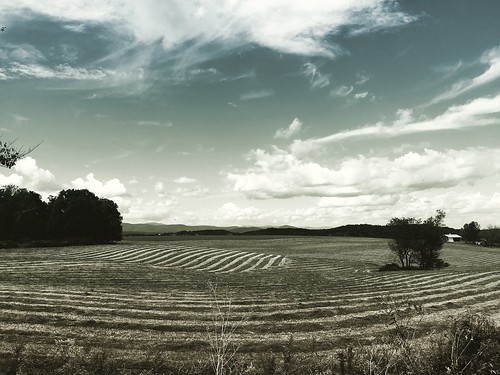
Fields near Swope, Virginia. Photo by Bob Kirchman.
Betsy Bell and Mary Gray
Staunton's Twin Mountains Recall Two Young Ladies

Flowers and leaves on Betsy Bell Mountain.
Memorialized in a historic ballad, Betsy and Mary were daughters of two Perthshire gentlemen who went into isolation in the country to avoid a plague. The year was 1666 and a young man who was in love with both of them came to supply them regularly with food. The man eventually came down with the plague himself, passing it along to the two girls. The young man and both girls died of the plague.
The first settlers of the area named the mountains because they reminded them of two similarly named mountains in the old country. The City of Staunton's history records the following:
The original 50-acre park was donated to the City in 1941 by Charles Catlett, who specified that "The City of Staunton shall as far as is reasonably practicable and in its considered opinion advisable, and for the common benefit of its citizens and inhabitants, keep and maintain the crest of the mountain as a perpetual memorial..." of events in the past life of the community and in memory of its citizens who have given their lives in protecting the nation.
Catlett further specified that the site be maintained in its natural state, that a "cross" cut out of the woods along the crest be maintained, and that City Council visit the crest of Betsy Bell once each Spring in remembrance of the gift. These requirements have been honored since the bequest. An additional 20 acres was acquired by the City through a donation from CSC Associates in 1995."
The two mountains are one of my favorite places to hike. They provide a wonderful bit of wilderness right in the city of Staunton.
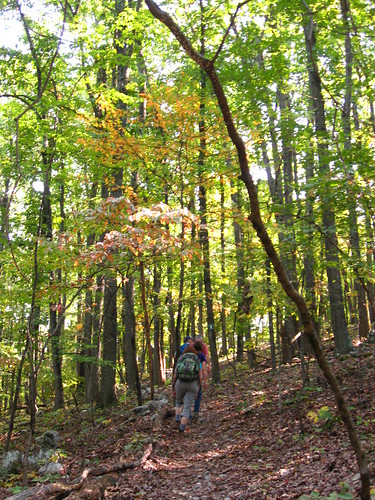
You forget that you are in the city as you walk up Mary Gray Mountain.
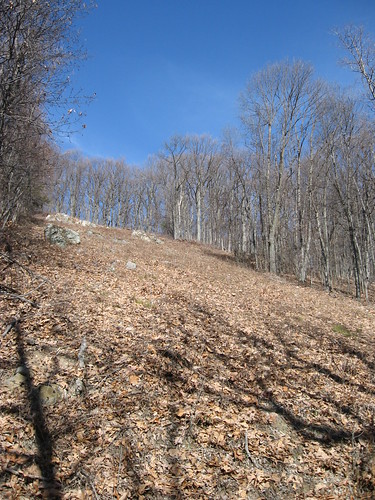
The Cross cut out of the forest on Betsy Bell Mountain. It is there as a memorial to those who have given their lives in defense of this Nation.
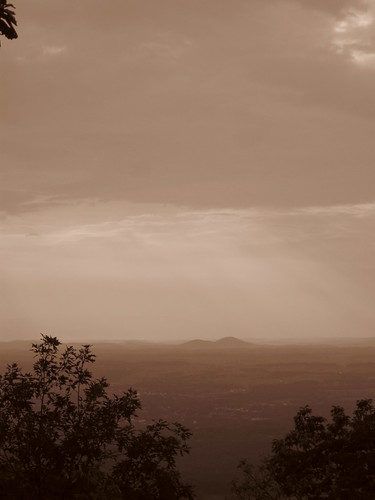
Looking West from Bear Den Mountain, Mary Gray and Betsy Bell show you where Staunton is.

The trail up the mountain was alive with color when I visited it in Autumn.
The Place of Faith in Education
A Unique Perspective on the Issue from CIVITAS

Iris.
Education is only adequate and worthy when it is itself religious… There is no possibility of neutrality… To be neutral concerning G-d is the same thing as to ignore Him… If children are brought up to have an understanding of life in which, in fact, there is no reference to G-d, you cannot correct the effect of that by speaking about G-d for a certain period of the day. Therefore our ideal for the children of our country is the ideal for truly religious education." -- William Temple, Archbishop of Canterbury in 1942.
Here is a very interesting report from CIVITAS [1.], on The Place of Faith in Schools [click to read] by Professor David Conway. It adds a new dimension to the debate now raging in America between those who would impose a strictly secular criteria and those who consider Faith an essential component of learning.
[A] nation which draws into itself continuously, and not merely in its first beginnings, the inspiration of a religious faith and a religious purpose will increase its own vitality… Our own nation… has been inspired by a not ignoble notion of national duty to aid the oppressed – the persecuted Vaudois, the suffering slave, the oppressed nationality – and it has been most... characteristically national when it has most felt such inspiration…
We offend against the essence of the [English] nation if we emphasise its secularity, or regard it as merely an earthly unit for earthly purposes. Its tradition began its life at the breast of Christianity; and its development in time, through the centuries… has not been utterly way from its nursing mother… [I]n England our national tradition has been opposed to the idea of a merely secular society for secular purposes standing over against a separate religious society for religious purposes. Our practice has been in the main that of the single society, which if national is also religious, making public profession of Christianity in its solemn acts, and recognising religious instruction as part of its scheme of education." -- Ernest Barker, Cambridge Philosopher
Professor Conway Concludes: "All would stand to benefit from such committed forms of religious education in the country’s state-funded schools, not simply because it would be likely to improve the educational performance, behaviour and well-being of the nation’s schoolchildren. They would also all benefit because, I believe, only by continuing to provide it can this country be assured of remaining the independent and united liberal polity that it has for so long been and from whose continuing to be such all its diverse inhabitants would derive benefit, even those who do not share that faith or any other."
The Longest Day
Remembering June 6, 1944
One of my favorite movies is "The Longest Day." My favorite scene in the movie is where General Theodore Roosevelt Jr., Son of the 'Rough Rider' President, pleads to be allowed to accompany his men in the invasion. If you love heroes, the scene will bring you to tears. Finally Roosevelt hears his commander say "permission reluctantly granted. Oh, by the way, how's your arthritis?" "Hasn't Bothered me in months," replies Roosevelt. As he leaves, you see him retrieve the cane he has hidden in some pipes as he heads off down the ship's passageway.
The true story of General Roosevelt is one all of us should know. He repeatedly led groups of men off the beach and achieved an impressively low casualty rate in the beginning of the invasion. He had trained these men and wanted to be with them when they faced the hard test.
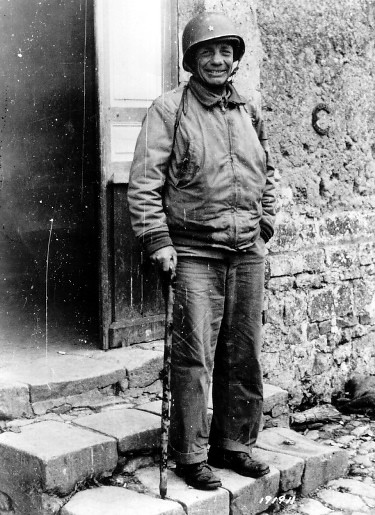
General Roosevelt in France
He was the only general to come ashore in the first wave of the invasion, leading the men out of his landing craft. No doubt his leadership under fire saved many lives.
After battling their way ashore, the troops discover that they have drifted a mile from where they should have landed. It was then that General Roosevelt personally scouted their situation and uttered these famous words: "We'll start the war from right here!"
"Ted Roosevelt on Utah Beach"
Those were the words of Omar Bradley when asked to name the single most heroic action he had ever seen in combat. Major General "Tubby" Barton had reluctantly assented to this plea from Roosevelt: "The force and skill with which the first elements hit the beach and proceed may determine the ultimate success of the operation... With troops engaged for the first time, the behavior pattern of all is apt to be set by those first engaments. [It is] considered that accurate information of the existing situation should be available for each succeeding element as it lands. You should have when you get to shore an overall picture in which you can place confidence. I believe I can contribute materially on all of the above by going in with the assault companies. Furthermore I personally know both officers and men of these advance units and believe that it will steady them to know that I am with them."
Barton thought he would never see Roosevelt in this life again when he cut those fateful orders. When Barton later came ashore and met up with Roosevelt, he had this to say: "while I was mentally framing [orders], Ted Roosevelt came up. He had landed with the first wave, had put my troops across the beach, and had a perfect picture (just as Roosevelt had earlier promised if allowed to go ashore with the first wave) of the entire situation. I loved Ted. When I finally agreed to his landing with the first wave, I felt sure he would be killed. When I had bade him goodbye, I never expected to see him alive. You can imagine then the emotion with which I greeted him when he came out to meet me [near La Grande Dune]. He was bursting with information."
A month after the invasion, Ted Roosevelt died of a heart condition which would have disqualified him from leading in the first wave. He was buried in France alongside his brother Quenton who had died in World War I. His Medal of Honor citation reads as follows: "For gallantry and intrepidity at the risk of his life above and beyond the call of duty on 6 June 1944, in France. After 2 verbal requests to accompany the leading assault elements in the Normandy invasion had been denied, Brig. Gen. Roosevelt's written request for this mission was approved and he landed with the first wave of the forces assaulting the enemy-held beaches. He repeatedly led groups from the beach, over the seawall and established them inland. His valor, courage, and presence in the very front of the attack and his complete unconcern at being under heavy fire inspired the troops to heights of enthusiasm and self-sacrifice. Although the enemy had the beach under constant direct fire, Brig. Gen. Roosevelt moved from one locality to another, rallying men around him, directed and personally led them against the enemy. Under his seasoned, precise, calm, and unfaltering leadership, assault troops reduced beach strong points and rapidly moved inland with minimum casualties. He thus contributed substantially to the successful establishment of the beachhead in France."
Remembering Theodore Roosevelt Jr.
It is worth noting that Roosevelt, while a very effective officer, was not liked by everyone he met. Serving in the North Africa Campaign in 1942 under Major General Terry Allen he drew the ire of George S. Patton. Both Allen and Roosevelt went against Patton's spit-and-polish mentality and were seldom seen in dress uniform. Roosevelt was too much of a "hands on" type of guy to strut around avoiding the hard stuff. Patton relieved both Allen and Roosevelt of their commands. Roosevelt went on to fight in Sicily and Italy. He became chief liaison officer to the French Army in Italy for General Dwight D. Eisenhower.
Great men have often struggled in the process of becoming the heroes we remember and that is worth remembering along with their mighty deeds.
